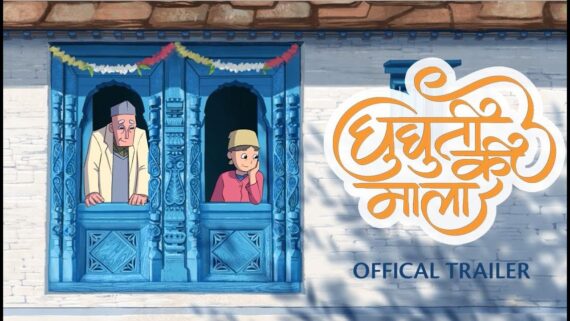A Festival, A Folktale, A Film: Ketan Pal’s Ghughuti Ki Maala
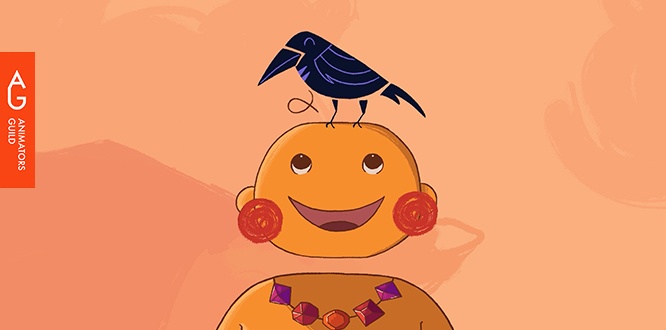
At 28, Ketan Pal is many things- freelance animator, short film director, motion designer, and, in his own words, someone who sips on strawberry milkshakes while animating scenes deep into the night. But there’s one identity that quietly shapes everything he creates: a boy from the hills, still sketching home from memory.
Born in Almora but raised in Garhwal, Ketan first stumbled upon Ghughutiyaar while leafing through books on Uttarakhand’s folk stories.
“What surprised me was that I myself had never heard of the festival before. When I started asking around, I realized that even many people from Uttarakhand either didn’t know about it or didn’t know the story behind it. That gap made me want to focus on it.”
That curiosity sparked Ghughuti Ki Maala- a hand-crafted animated short that reimagines the Kumaoni festival of Ghughutiyaar through the eyes of little Bhanu. Blending everyday family rituals with royal folklore, the film is both a love letter to Uttarakhand and a cultural revival. It has taken Ketan three years, the support of a generous community, and a whole lot of freelance hustle to complete.
Ghughutiyaar is a winter festival celebrated in the Kumaon region of Uttarakhand every January, coinciding with Makar Sankranti. At dawn, children thread sweets made of flour, jaggery, and sesame seeds into necklaces called ghughuti malas. They wear them proudly and then step outside, singing songs and calling to the crows - the first guests of the season.

Still from Ghughuti Ki Maala
The making of Ghughuti Ki Maala began not at a desk, but in the mountains themselves. In the summer of 2022, Ketan travelled to Almora- the heart of Kumaon and a region where Ghughutiyaar is still celebrated.

Still from Ghughuti Ki Maala
He spent time with families, listening to their stories and memories of celebrating the festival as children. What struck him was how their energy shifted- starting reserved, but lighting up with warmth and laughter as they spoke of Ghughutiyaar. Those conversations gave the film its emotional core and reminded Ketan why the story needed to be told through a child’s eyes.
And that is why at the heart of the film is little Bhanu, a spirited boy with whose curiosity the audience is invited to step into the festival.

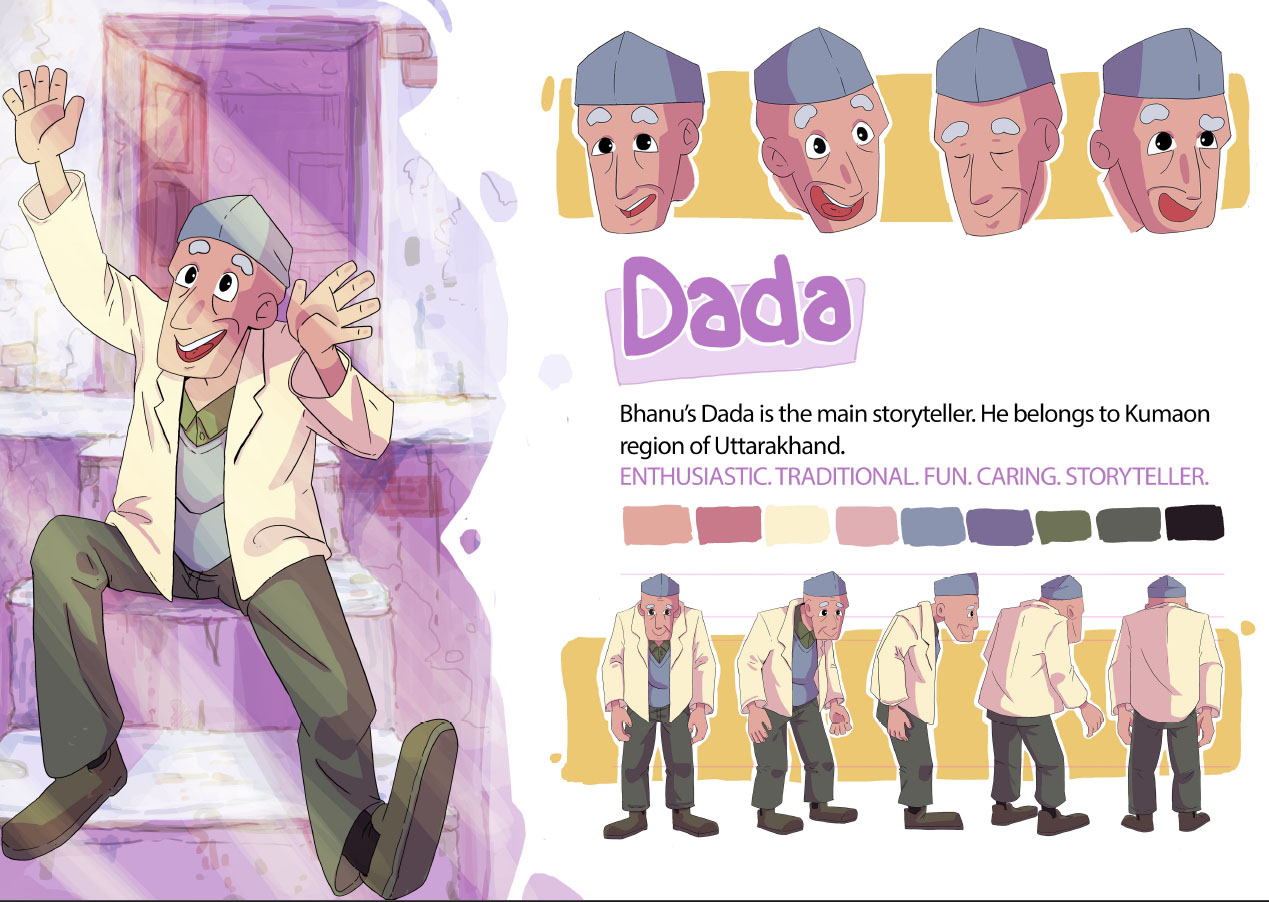
Characters from Ghughuti Ki Maala
“Since Ghughutiyaar has always been more of a children’s festival, it felt natural to tell the story through the eyes of a young and slightly rebellious child named Bhanu,” Ketan says.
“His curiosity allows the audience to rediscover the festival with a sense of wonder, while also keeping it relatable to today’s generation.”
Bhanu was not the first choice for protagonist- but he quickly became the soul of the film.
“Originally, Bhanu was imagined as a side character, while a girl was supposed to be the lead. But due to a few technical and creative factors we shifted their roles, and he became the protagonist.”

Still from Ghughuti Ki Maala
From his everyday mountain attire to his familiar name, Bhanu became a bridge between fiction and lived reality.
“We tried a few names, but finally fixed on Bhanu because it is such a familiar and everyday name for kids in the mountains. Surprisingly, that decision really connected with audiences.” Ketan explains.
“Many people commented on YouTube that they got a jump scare hearing their own name Bhanu in the trailer, which was a pleasant surprise for them since such names are rarely heard in films.”

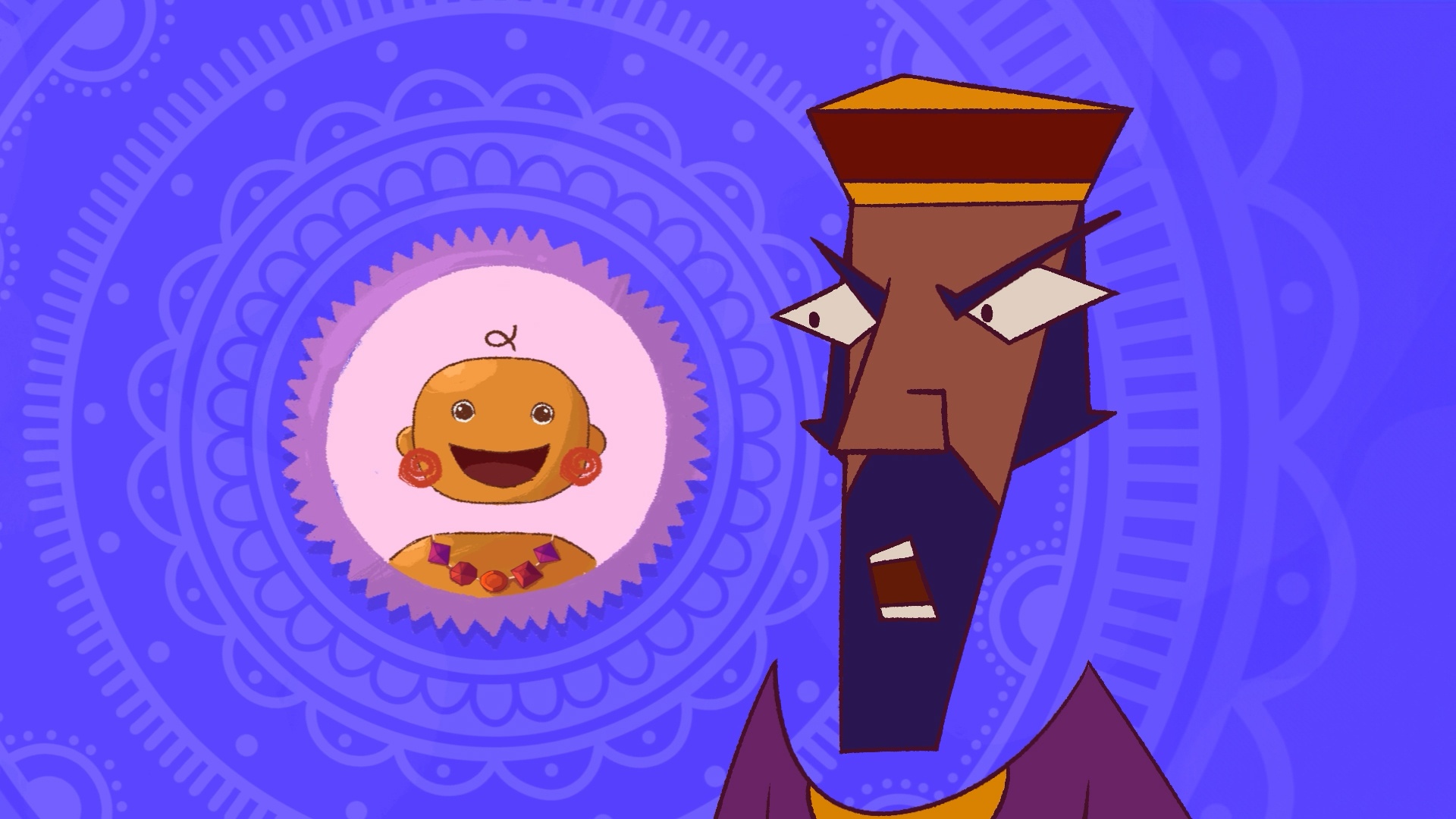
Still from Ghughuti Ki Maala
Ketan’s storytelling has always been rooted in detail and observation. As a child, he filled notebooks with sketches of mountains, trees, and village courtyards. Those observations became the foundation of Ghughuti Ki Maala.
“I would spend hours just looking at the mountains,” he recalls. “That gave me a deep sense of how the lines, colors, and textures of the landscape really feel.” Ketan says
“I was very specific even with my design team about how certain mountains should look, what shade the grass, stones and leaves should have, how the kitchen should feel, or how the sunlight should fall on the hills.”
The result is a film that looks and feels authentically Uttarakhand.

Still from Ghughuti Ki Maala
A popular art form called Aipan from Uttarakhand was something Ketan and his team steered away from. ”It has become overused in almost everything these days, and since it relies heavily on red and white, it didn’t suit my vision of a colorful short film from Uttarakhand.” Ketan explains
Music played an equally vital role in grounding the film. Ketan says, “Shashank Singh from Dehradun designed the soundscape, and the film also has a title track written and sung by Nupur Pant. It beautifully captures the essence of the mountains and the heart of the story, and I can’t wait to release it.”
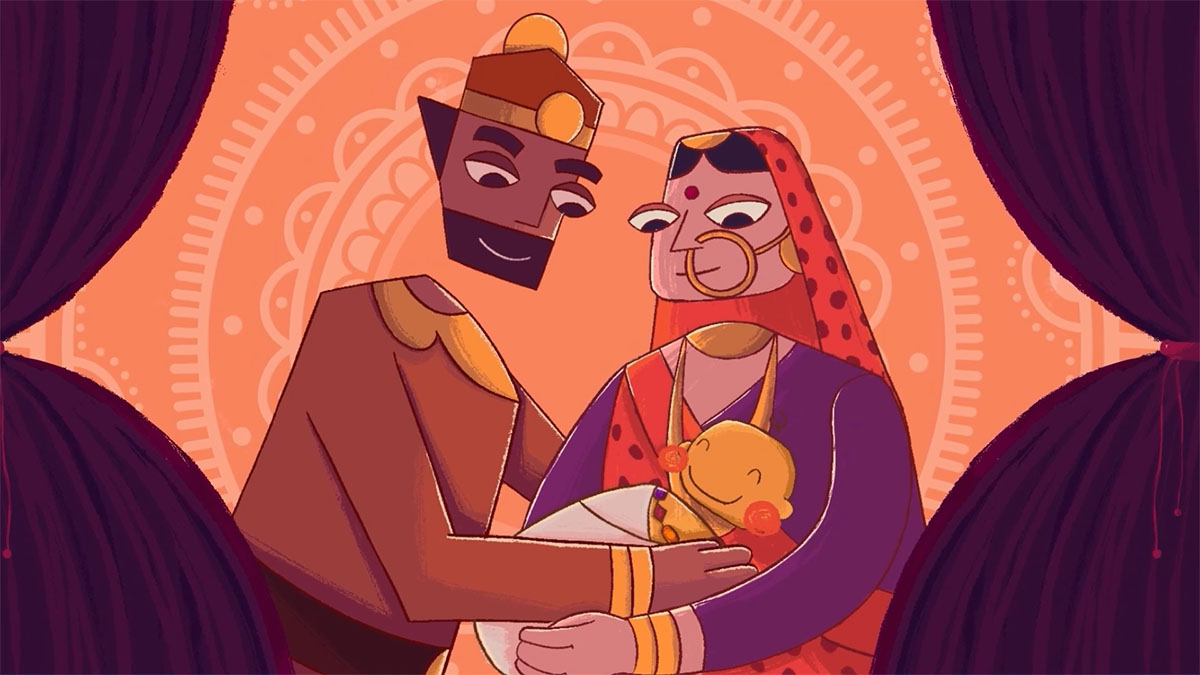
Still from Ghughuti Ki Maala
Ghughuti Ki Maala is as much a story of determination as it is of folklore. With no external producers, sponsors, or crowdfunding, Ketan relied solely on his own savings and relentless freelance work to fund the film.
“Ghughuti Ki Maala is a fully self-funded project. No sponsor, no financial producer, no crowdfunding. Everything was made possible only through my own savings and work. It took me three years to complete and around 8–9 lakhs to fully finish it, including everything except for my own cut.”
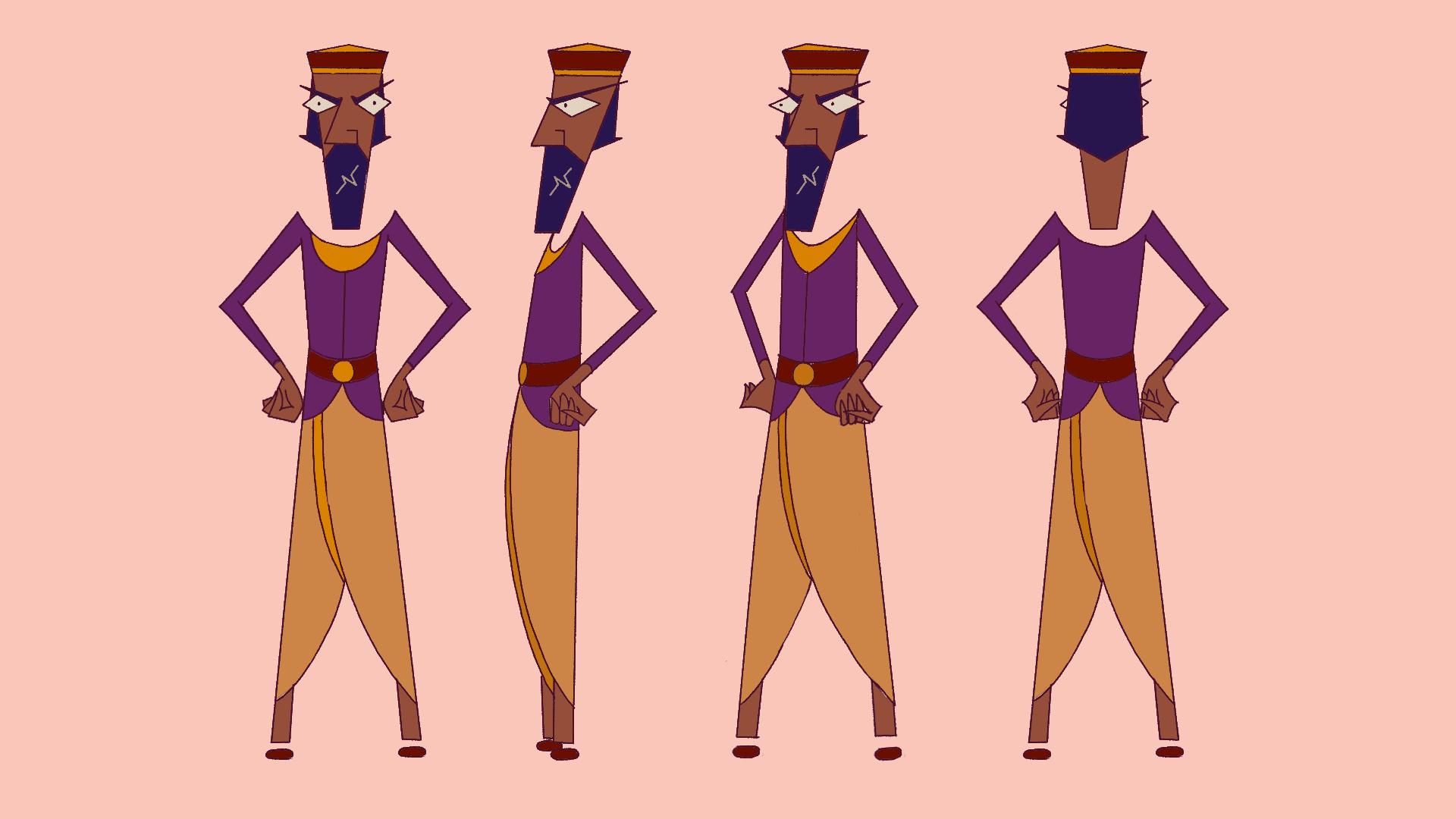

Character turnaround and visualisations for Ghughuti Ki Maala
“There were times I was literally begging people on phone calls to help me or to reduce their costs. At the same time, it was heartwarming because so many wonderful people stepped up. They told me, ‘Ketan, it is your film. We believe in this story, we believe in you, and we want to contribute. Paise ka baadmai dekhlenge.’” Ketan says.

Drawing from his own Kumaon roots, Arvind from Totem Creative became a steady anchor for the film, offering both mentorship and cultural sensitivity.
At a crucial point, Kartik Mahajan stepped in as assistant director and project manager, bringing structure and much-needed fresh energy. Alongside them, Sharan, Mithun, Manas, Khushi, and Haresh played crucial roles in making the film and were an integral part of the process. Artists Aritra Guha Ray and Kaushani Majumder crafted backgrounds and pre-visualisations with remarkable sensitivity, while Aditya Srinivas, Harpreet Singh Rehal, and Rohan Bharadia joined in pivotal roles, pushing the project forward and helping carry it to the finishing line.
In fact, I once asked Aritra if he had secretly lived in Uttarakhand, because he painted it so convincingly it felt as if he had been born there himself.

Many more friends, juniors, and colleagues from MIT also contributed, lending their skills in animation, compositing, and finishing touches. Though the average age of the crew was just 23 or 24, what they lacked in experience they more than made up for in sincerity.
“The film also came alive thanks to a group of collaborators I met through festivals and personal connections… Everyone gave their best, and I hope audiences can feel that honesty.”

Managing a team larger than he’d ever handled before was truly challenging. At one point, 10–12 animators were working alongside designers, sound artists, and voice actors, all looking to him for direction.
“I see this film as the beginning, the first time I have put together so many people and elements into one project. It feels like a trial version, for much bigger things to come.”
Balancing creative oversight with production duties was overwhelming, especially while he juggled client work to fund the film. Yet he made it a point to look after his team’s well-being, even shifting his interns in Dehradun to his own home when their workspace became too uncomfortable. It was a trial by fire in leadership, one that left him exhausted but also proud.
Ketan adds, “I discovered that if I want to live a good life and not lose all my hair in my 20s, I cannot direct, animate, and produce at the same time. Especially not in a language I do not even speak or write myself.”
Since its release, audiences have embraced the trailer, connecting deeply with the playful innocence of the boy experiencing the festival.
“Some [viewers] sent 200 or 500 rupees, a few even sent 1,000 or 2,000. Not just from India but also from abroad. The fun I had in earning that 1–2k from such kind strangers was more than what I feel even after earning a lakh from client work.”
Today, with this film complete, Ketan is excited by the possibility of a third short- this time a comedy. “As far as short films go, I have made two now and naturally I would love to make a third one someday, just to round off a set of three. That is still far away, but if I do it, I would like to make it a brainrot comedy.”
“What’s next for me is probably a looooooong vacation. I want to recover from the last three years and return with fresher energy.”
Ghughuti Ki Maala carries the light, textures, and sounds of Uttarakhand, seen through the eyes of a boy who never stopped sketching its mountains. In giving new life to Ghughutiyaar, Ketan has also found his own way back to the hills, reminding us that stories of home are the ones that stay with us the longest.
On that note we come to the end of this article with Ketan Pal. We thank him for his time and eagerly await Ghughuti Ki Maala’s release on screen!
You can reach out to Ketan Pal and stay updated with his work on the channels below

Ketan Pal

